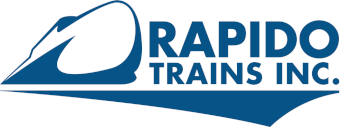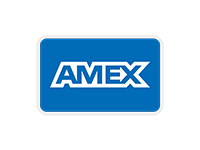General Electric 44-Ton Diesel Masterclass
By Craig Walker
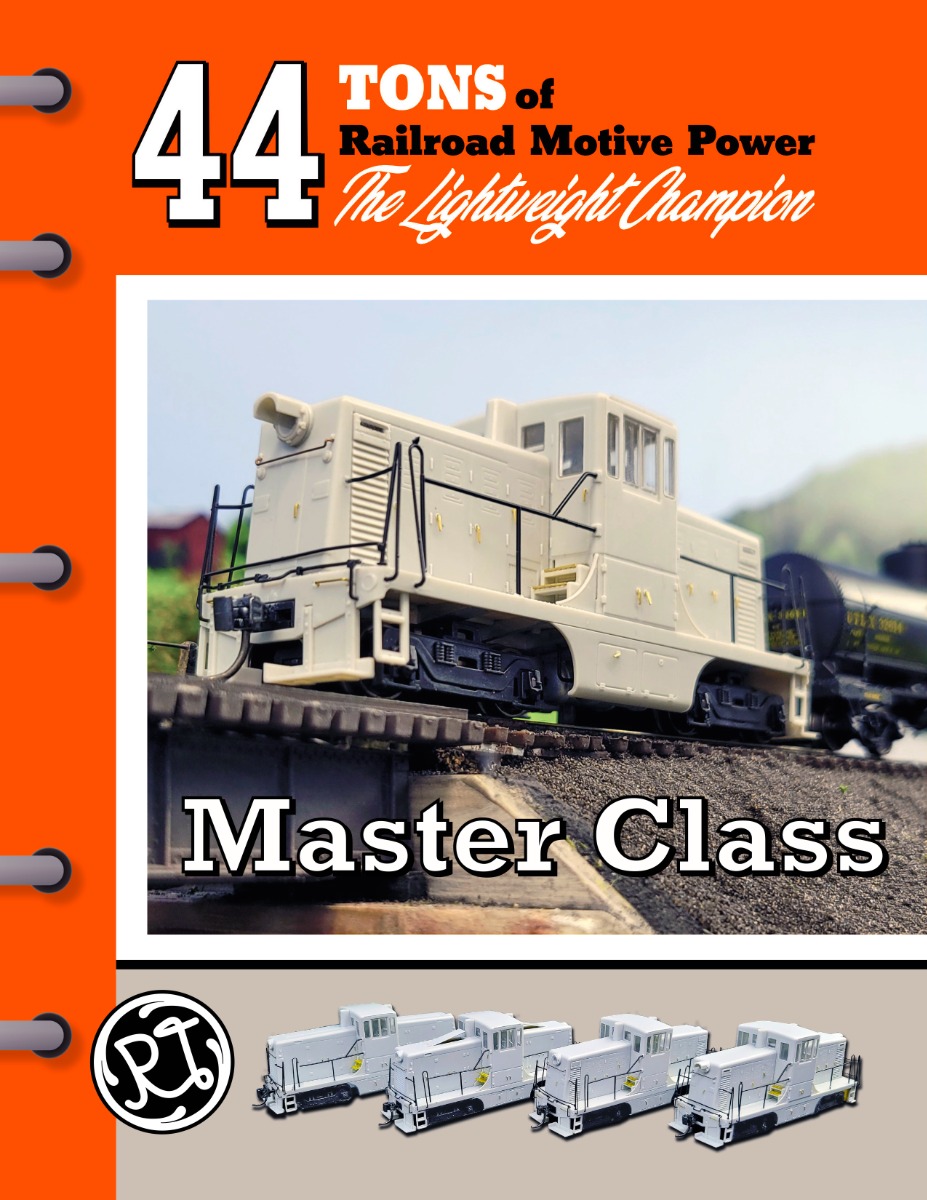
Size Does Matter
In 1937, as it became clear that diesel locomotives, in large part due to their less complex design than a steam locomotive, was rapidly becoming the railroads’ choice for new power, railroad unions began negotiations with the railroads to protect the jobs of locomotive firemen. While the craft’s name would become an anachronism as diesel had no fire to tend, the jobs also provided an additional set of eyes in a locomotive’s cab. A new contract was adopted that protected these jobs, but only on locomotives of 90,000 pounds (45 tons, or for much of the world: 40,823 kg) or more. This “90,000 Pound Rule” was designed primarily to allow industrial operations (steel mills, grain elevators and the like) to operate locomotives with a single cab occupant – the engineer – for their smaller operations. Many shortlines were also able to take advantage of this as well.
Locomotive builders responded to this 1937 labor agreement by designing some locomotives strictly for this market, and in 1940 General Electric began marketing their 44-ton diesel-electric switcher. As other locomotive companies also offered locomotives weighing under 90,000 lbs, also marketed as “44-ton diesels,” the builders’ initials were added unofficially to help differentiate General Electric’s 44-ton locomotives from the other builders (primarily Canadian Locomotive Company, Davenport, Porter and Whitcomb). Unlike these other builders, General Electric marketed their 44-ton diesels, with some success, to the larger Class 1 railroads as well as the usual industrial and shortline customers.
Many of the larger railroads, seeing a need for light industrial-type locomotives for some uses, took advantage of 1937’s “90,000 Pound Rule” as well, and GE 44-ton diesels were purchased for use in small yards, backshops, passenger terminals and even small industrial areas that they served.
These diminutive locomotives still had a second seat in their cab, which was often used by a conductor or brakeman. The GE 44-ton featured a cab mounted in the center of the locomotive, and as it was generally taller than the hoods on each end, it provided a much-improved visibility – essentially a 360º view! – for the engineer over the even the small steam locomotives they were used to operating. The hoods on either end of the locomotive also provided a bit of protection, as well, in the case of an accident.
These locomotives were just 33 feet, 5 inches in length. Under each of the two hoods was a Caterpillar V8 diesel engine (usually D17000), generating anywhere from 350 to 410 horsepower, depending upon the type of diesel engine used. (Some of these diesels were constructed with alternate diesel engines, such as ten “Phase II” units built with Buda 6DH1742, which created 205 hp each.) GE built 44-ton locomotives from 1940 until 1956, producing 386 of them: 359 of them for railroads in the US (including up to 26 Class 1 roads), 9 for Canadian railroads and 5 for use in México, with the rest ending up in Australia, Cuba, Dominican Republic, France, India, Saudi Arabia and Sweden. These were also popular with various branches of the US military as well. Perhaps due to their generally light usage and generally simplified design, the majority of these locomotives live long and productive lives, and many are still in use today, although primarily now at museums.
Quantity Matters Too
Throughout 16 years of production, there were multiple variations constructed: Five distinct phases and six sub-phases. There were also options offered to customers, such as the ability to operate them in Multiple Units (MU), an option generally, but not exclusively, requested by larger railroads, as well as headlight options (hoods or hood/numberboards, for example), all-weather cab windows and other appliances. Air horns varied, but were:
- WABCO A1, A2, E2 or DD5 Pneuphonic
- Leslie A75, A125RR Typhon or A75LRR Typhon Whistle
The first GE 44-ton diesel was delivered to the Chicago Burlington & Quincy (CBQ 9103) on September 4, 1940. This was the first of 79 “Phase I” 44-tonners, produced until 1942. Spotting features for the various “Phase I” 44-ton diesels are:
- “Phase Ia” – Each built as a “special” order, generally, but these had:
-
- Radiator Openings: Side-mounted louvered radiators located at each end of the hoods
- Handrail ends attach to the hood at the locomotive’s ends
- Hood Ends: Broadly flat with no radiator openings, tapering 8”
- Hood Tops: Solid (no openings)
- Headlight: Round
- Sandfills: On hood ends
- Hood Doors: Open toward the cab (utilizing butt hinges)
- Access Ladder: Two, side-mounted on each side, near the center of the left truck
- Builder’s Plates on the center of the frame
- Length: 33’ 5”
- Truck Center: 18’ 9”
- "Phase Ib” – Same as Ia, with these changes
- Hercules DFXD engines
- GSC trucks (except on MP 800-801)
- Handrail ends attach to the frame
- “Phase Ic” – Beginning with B&M 114, the model is now standardized, nearly the same as Ia, with the following differences:
-
- Stepwells: Four, located on each of the frame’s corners

Maine Central 12 is a Phase Ic 44-Ton locomotive. This diesel, switching cars in the MEC’s yard in Waterville, Maine, in June 1963, is a fairly no frills diesel,
other than those nice classification lights. Note the louvers on the hood sides. Paul Westin photograph, Greg J. Sommers collection
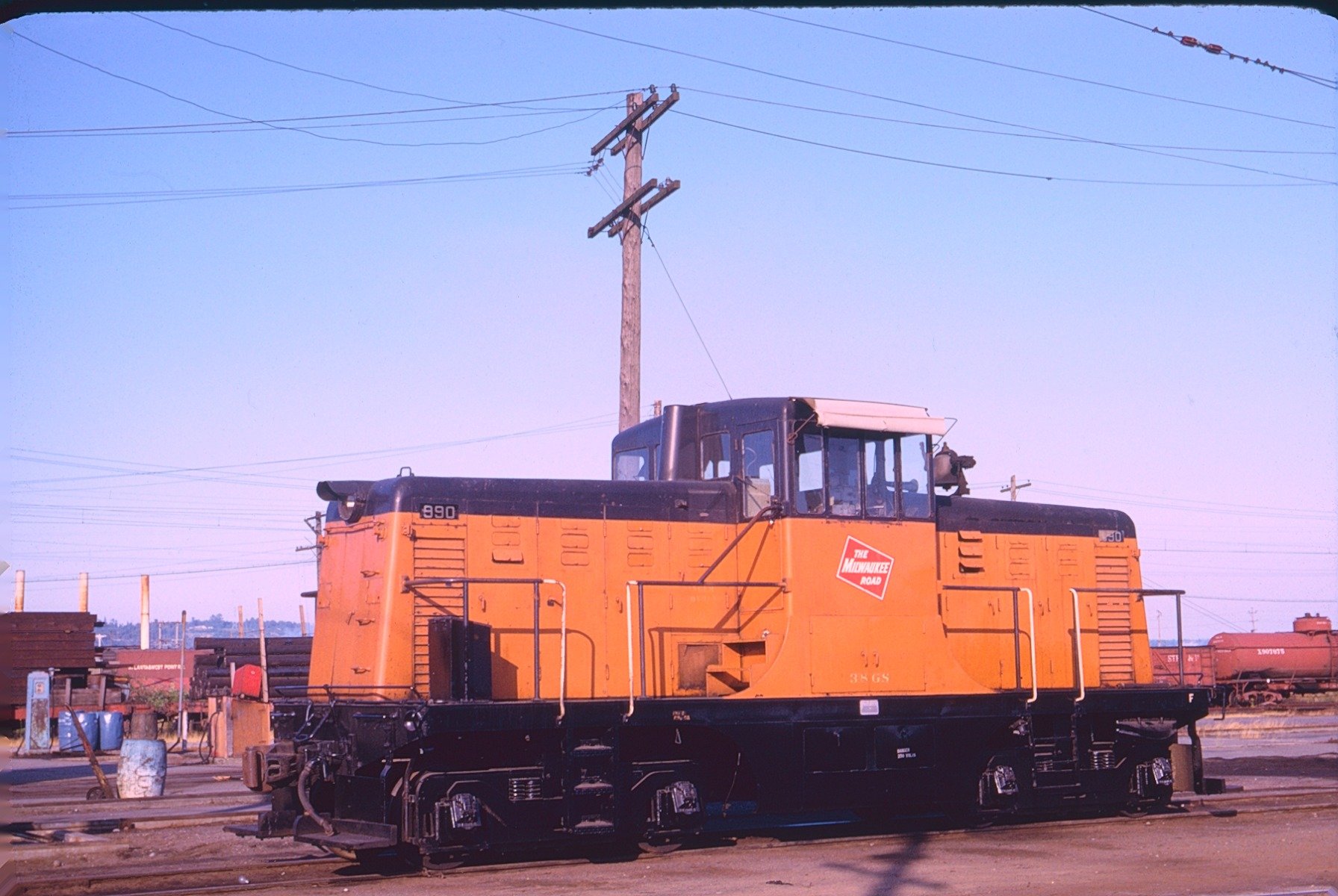
Milwaukee Road 990, a Phase Ic 44-Ton locomotive, features a steam locomotive bell on the top of its forward hood. Note, too, the hoods on its headlights, and the
equipment box on the rear walkway. Along with the louvers, this is a good view of the various small openings in the hood doors, and their hinged flaps.
(Tacoma WA – July 1965) Jim Buckley photograph, Greg J. Sommers collection

Western Pacific Railroad subsidiary Sacramento Northern owned two Phase Ic 44-Ton diesels (of their seven 44-Tonners), painted in WP’s classic orange and silver scheme.
These locomotives featured MU receptacles on the hood ends, and roof-mounted number boards. (South Sacramento CA – June 1970) Alan Miller photograph
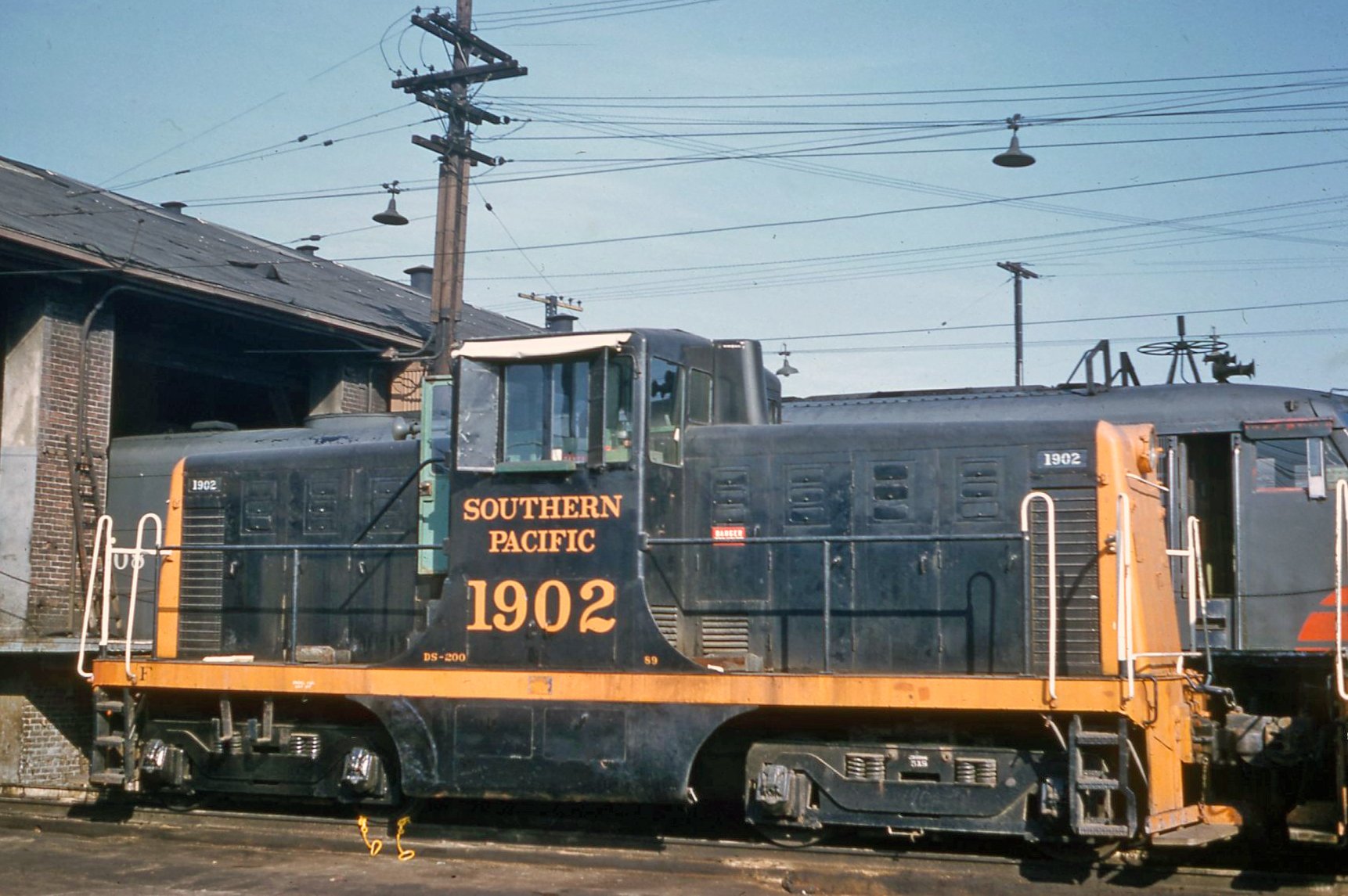
Southern Pacific Railroad a Phase Ic 44-Ton locomotive 1902 wears the railroad’s simplified black and solid orange paint scheme. Behind it is an SP PA-2 – yes, this is a
shameless plug for another Rapido Trains model! (West Oakland CA – December 1960) Alan Miller photograph
There were 43 “Phase II” locomotives built, beginning in December 1943 and lasting until May 1943. Spotting features for the various “Phase II” 44-ton diesels are:
- “Phase IIa”:
- Unchanged: Headlight, Handrail attachment, Builder’s Plate location
- Radiator Openings: Shuttered openings in hood ends, which taper 8”
- Hood Tops: Hinged longitudinal hatches, with hinges toward the ends
- Sandfills: Small doors on side of hoods
- Hood Doors: Single door opening on hood doors with the doors opening toward the ends (utilizing butt hinges)
- Stepwells: Four, located on each of the frame’s corners
- Generator Air Intakes: Small, on sides of hoods (approximately halfway between the hoods’ top and bottom)
- Cab Access Doors: Small, pairs under the cab and on the frame/skirting
- “Phase IIb” – Same as IIa, with the following differences:
-
- Buda engines
- Generator Air Intakes: Moved from top hood edge to left-hand hood
The “Phase III” 44-tonners numbered only 34 units, and were constructed from November 1943 until June 1945. Spotting features for the various “Phase III” 44-ton diesels are:
- “Phase III”:
-
- Unchanged: Radiator Openings, Headlight, Hood Tops, Stepwells, Generator Air Intakes, Handrail attachment, Builder’s Plate location
- Sandfills: Larger doors on side of hoods
- Hood Doors: “French door”-style hood doors (in which pairs of doors shared flat hinges)
- Cab Access Doors: Larger, pairs under the cab (none on the frame/skirting)
- Cab: Spot welded, gussets enlarged

Atchison Topeka & Santa Fe Phase III 44-Ton locomotive 467, wearing the later blue and yellow scheme, has a non-standard headlight and slightly different pilots.
(Fort Worth TX – January 1975) Bill Phillips photograph, Alan Miller collection
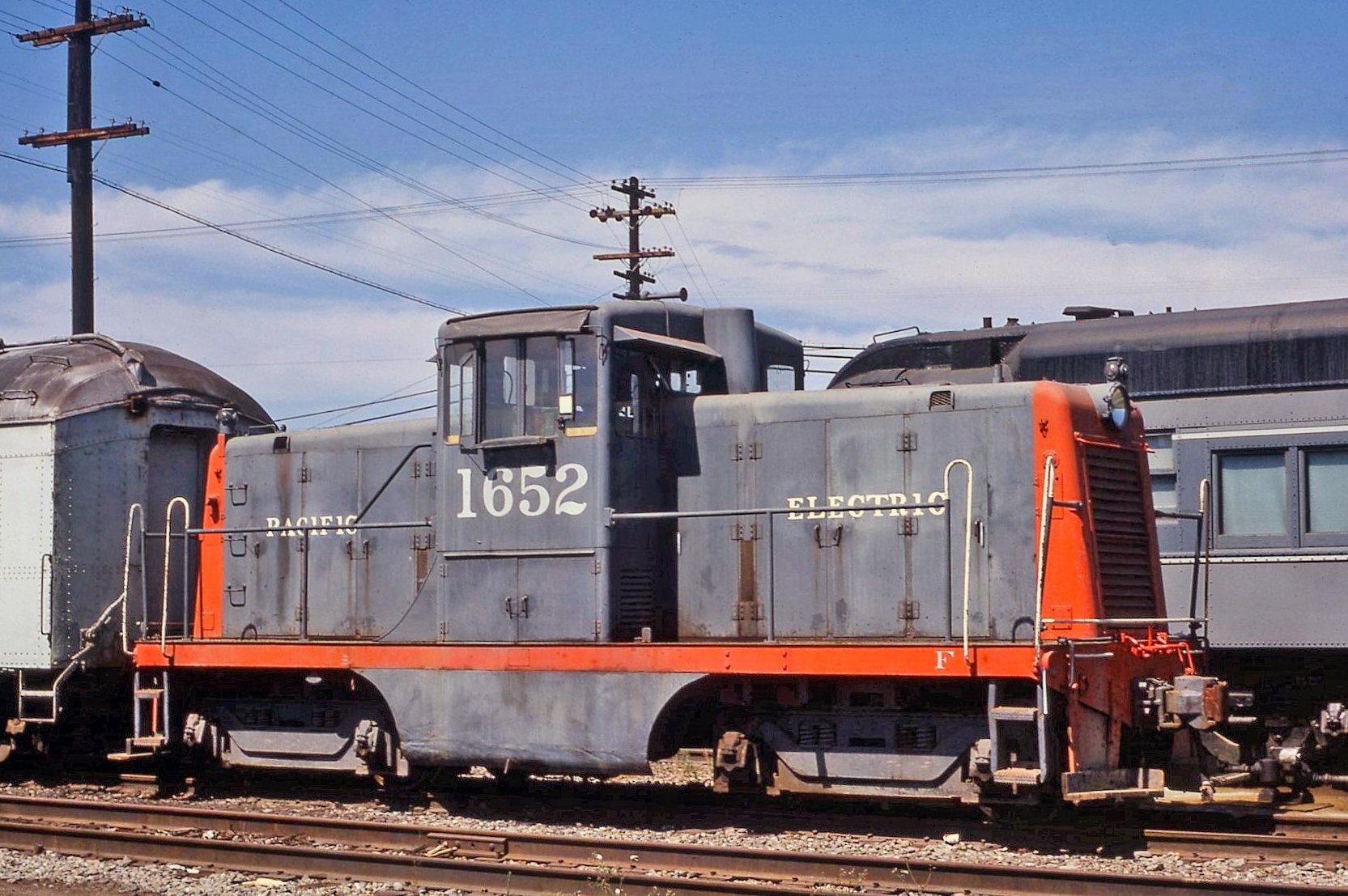
By the time of this photo of Pacific Electric Phase III 44-Tonner 1652, the switcher was wearing the “Bloody Nose” paint scheme of parent company Southern Pacific.
It was delivered in a solid red scheme, and at that time utilized trolley poles on its two hoods to activate signals on the electrified interurban railroad. And, by this time, this
diesel was hundreds of miles from Los Angeles, home to Pacific Electric, which had ceased operations a few years earlier.
(West Oakland CA – August 1965) Alan Miller photograph

St. Louis-San Francisco (Frisco) 7 is a Phase III 44-Ton locomotive. Along with the numberboards on the sides of the headlight, note the raised hinged longitudinal
hatches on the diesel’s rear hood, one of the spotting features of these Phase II and Phase III 44-Ton locomotives.
The unusual classification lights are certainly different! (Tulsa OK – April 1969) Greg J. Sommers collection

Many of the Southern Railway’s subsidiaries owned GE 44-Ton diesels: Alabama Great Southern, Atlantic & East Carolina and Cincinnati New Orleans & Texas Pacific,
New Orleans & North Eastern. However, this Phase III locomotive belongs to the Southern Railway itself and features headlight-side numberboards, along with,
at this late date, an ACI label on the cab – an early use of a bar code. The “J” in the roadnumber is a letter that acts as a check to make sure this locomotive’s
roadnumber is transcribed properly. (Atlanta GA – August 1975) Bill Folsom photograph, Greg J. Sommers collection
“Phase IV” GE 44-ton locomotives were the largest group, with 171 units built (with 62 of them rated at 400 hp rather than the usual 380 hp). This phase Built beginning in March 1945 (meaning the production overlapped the “Phase III” units) through September 1951. The Pennsylvania Railroad purchased 45 of these “Phase IV” units, more than any other railroad or other purchaser. The “Pennsy’s” locomotives were equipped with MU receptacles. Spotting features for the various “Phase IV” 44-ton diesels are:
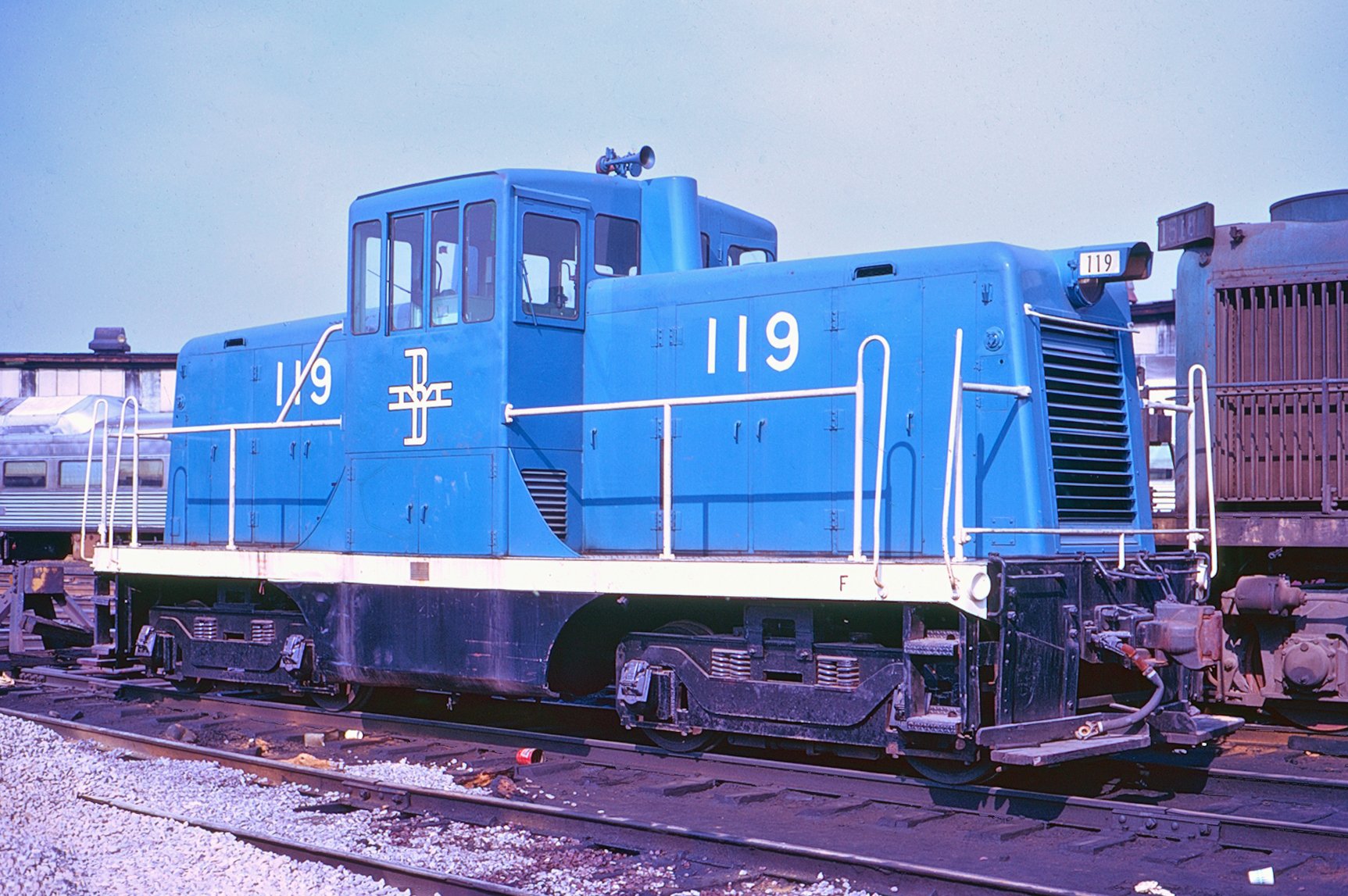
Boston & Maine 119, looking particularly dazzling in fresh McGinnes blue paint, is a Phase IVa 44-Tonner. This diesel features the headlight mounted numberboards.
Behind it is a B&M RDC – yet another plug for a Rapido Trains model! (Boston MA – January 1973) Phil Faudi photograph, Greg J. Sommers collection
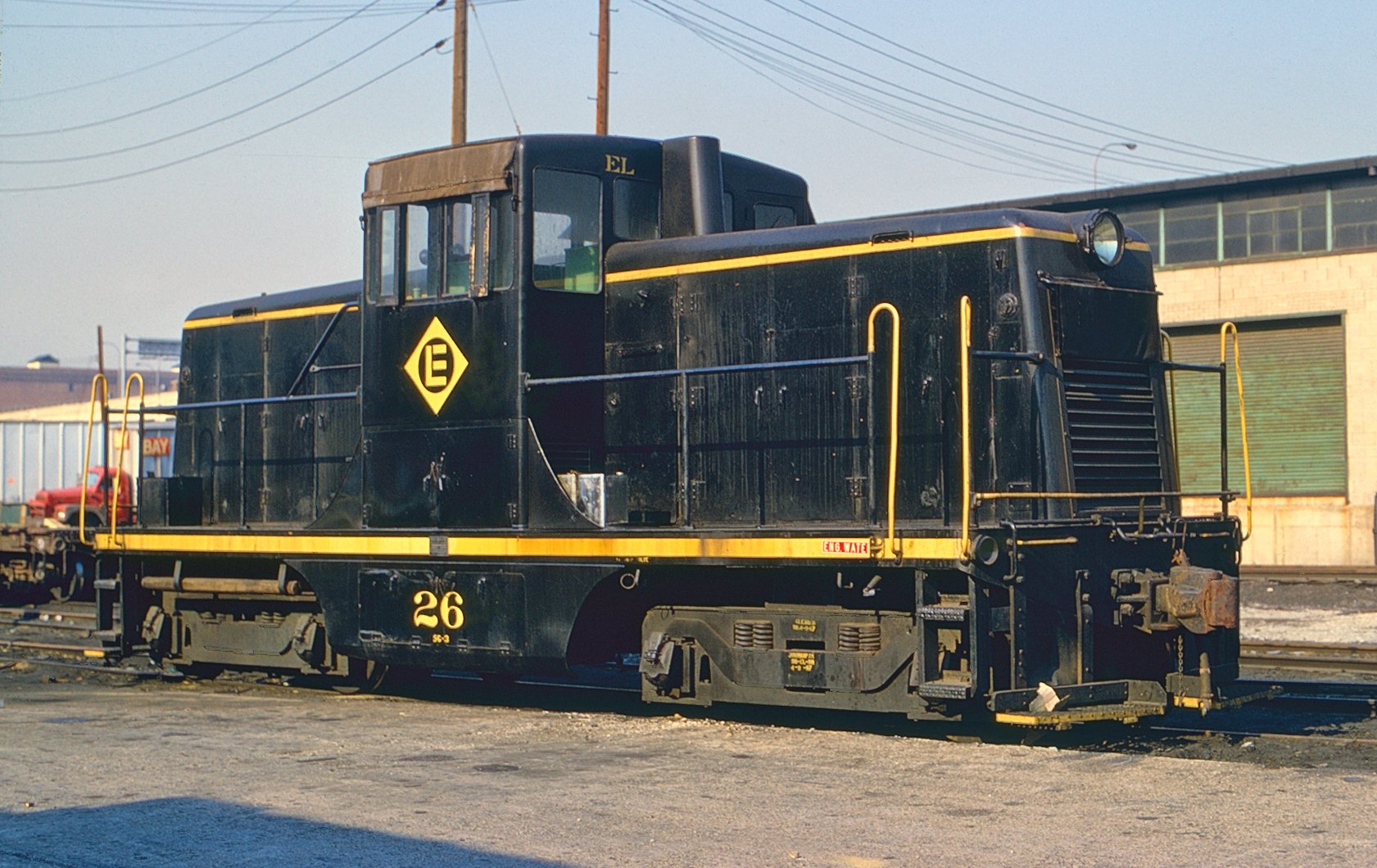
Erie Lackawanna 26 is the former Erie Railroad 26, the only GE 44-Tonner purchased by them. The EL, created by the 1960 merger of the Erie and the
Delaware Lackawanna & Western, owned four 44-Tonners (all Phase IVa), as the DL&W owned three.
(Bronx NY – April 1968) Matt Herson photograph, Greg J. Sommers collection

New York Chicago & St. Louis Railroad, known as the Nickel Plate Road, owned just one GE 44-Ton diesel, numbered 90. This was a Phase IVa version,
with numberboards on the sides of the headlights. (Bloomington IL – April 1968) Louis A. Marre photograph
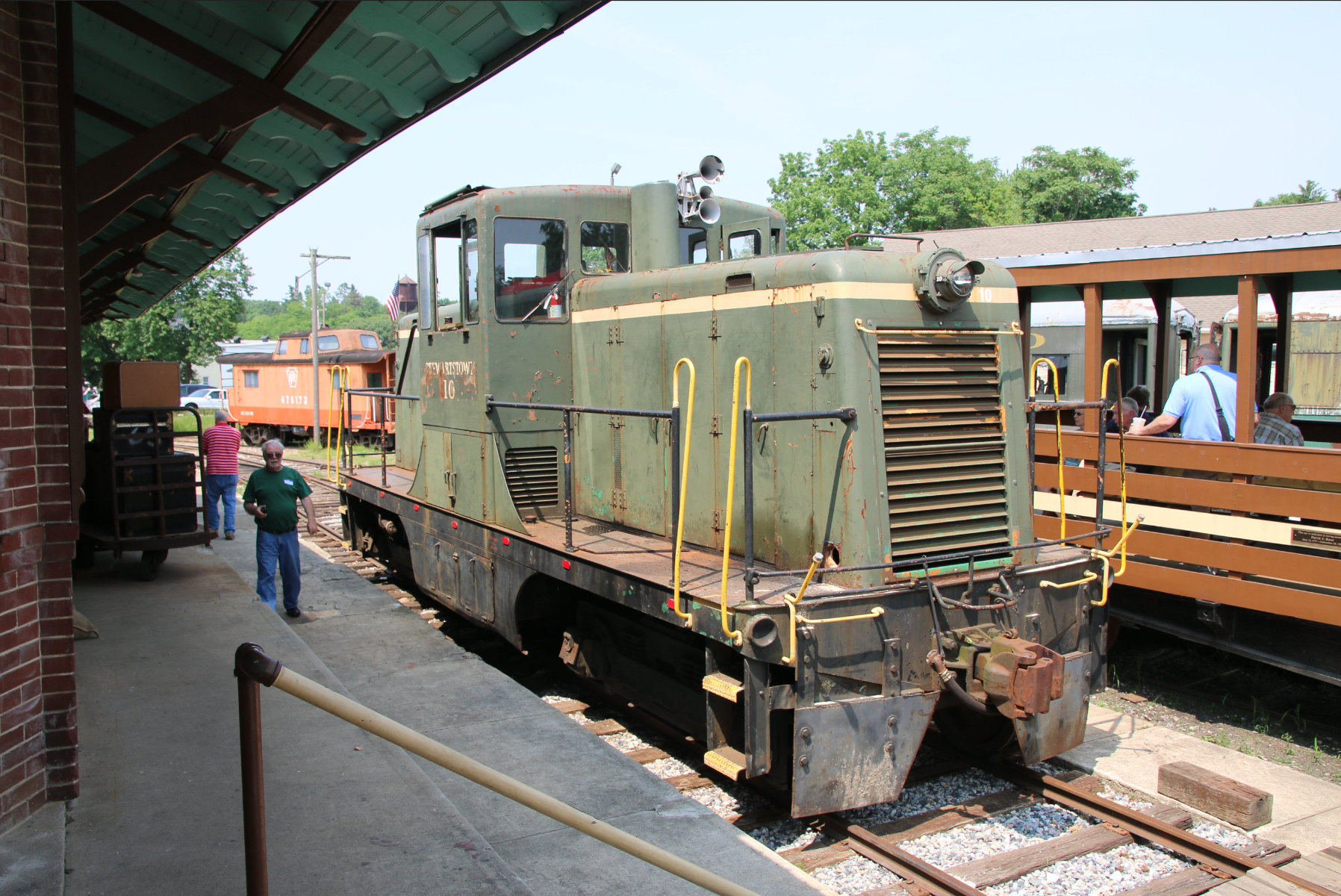
This Phase IVa 44-Tonner was originally built by GE in August 1946 for the Coudersport & Port Allegheny Railroad and numbered D-1. (Many early diesels carried alphanumeric numbers in the early days.). It was later sold to the Wellsville Addison & Galeton, retaining the D-1 roadnumber. From there, it was sold to the Stewartstown Railroad, which numbered it 10, as seen here. Note that the headlights at some point were upgraded to a less attractive style. The sideway-mounted three chime air horn is also of interest – an unusual mounting but most likely a sweeter-sounding air horn than its original two single chime “blat” horns. STRT 10 wore a sticker over its number, the adhesive of which can be seen on the cab side, with NCRR 10 upon it, as it was in service on the Northern Central Railway for a time. (Stewartstown PA – June 2019) Cale Leiphart photograph
- “Phase IVa”:
- Unchanged: Radiator Openings, Headlight, Sandfills, Hood Doors; Stepwells, Cab, Handrail attachment, Builder’s Plate location
- Hood Tops: Hinged longitudinal hatches, lengthened compared to earlier phases
- Generator Air Intakes: Squarish, on sides of hoods (between the door nearest the cab and the next outward door, and lower than on Phase II)
- Cab Access Doors: Larger, pairs under the cab (none on the frame/skirting, as on “Phase III” )
- Engine Air Intakes: Long rectangular openings above the outermost hood doors
- “Phase IVb” –Same as IVb, except:
- Engine uprated from 380 hp to 400 hp
- Builder’s Plates now located at the frame end
The last phase, “Phase V” consisted of 43 locomotives constructed from November 1951 until October 1956. The final GE 44-ton built, the 373rd, was for the Dansville & Mount Morris (DMM 1). Spotting features for the various “Phase V” 44-ton diesels are:
- “Phase Va”:
- Unchanged: Radiator Openings, Hood Tops, Stepwells, Generator Air Intakes, Cab Access Doors, Cab, Handrail attachment, Builder’s Plate location
- Headlight: Rectangular
- Sandfills: Larger doors on side of hoods
- Hood Doors: “French door”-style hood doors, but now with embossed stiffeners around each door’s edges
- Engine Air Intakes: Long rectangular openings above the outermost hood doors
- “Phase Vb” – To meet the Air Force’s loading limits, a subphase of 14 locomotives built for the US Air Force and Navy were:
- Hood Ends: More vertical, tapering just 2” rather than the standard 8”
- Length: 31’ 5½”
- Truck Centers: 14’ 9” (48” closer)
- Skirting under the cab: None
- Diesel: Caterpillar 342 6-cylinder diesel engines, but were still able to operate at 200 hp each.
- “Phase Vc”:
-
- Same as “Phase Va” except:
- Engine – Changed from Caterpillar D17000 V8 to Caterpillar D341 6-cylinder (both 400 hp)
- Only one Engine Air Intake per side, rather than two
As usual, nothing is as simple as one might think, as there is more about phases.
GE 44-ton locomotives were popular with the US military, which purchased more than just the 14 USAF locos in the “Phase V” paragraph. Many of these military locomotives were built to other specifications due to their possible use overseas, such as 60 US Army locomotives with a lower-than-normal cab to account for tighter foreign clearances ... and, despite the lower cab height, ended up weighing 45-tons. These Army locomotives also included a large equipment box on one walkway, along with the standard European-style screw couplers and buffers on the ends.
A Brief Word About Owners
As there is a rather lengthy and detailed GE 44-Ton roster included in this Master Class, for those who don’t care to slog through all that data (and how can one be a railfan if one doesn’t enjoy crunching all that data?), here is what we hope is a quick summary of the owners:
Class One railroads that purchased these locomotives include: Atchison Topeka & Santa Fe, Boston & Maine; Canadian National; Chesapeake & Ohio; Chicago & North Western; Chicago Burlington & Quincy, Delaware Lackawanna & Western; Denver & Rio Grande Western; Erie; Great Northern; Illinois Central; Lehigh Valley; Maine Central; Milwaukee Road; Missouri Pacific (and subsidiaries I-GN and SBM); New York New Haven & Hartford; Northern Pacific; Pennsylvania Railroad; St. Louis-San Francisco (Frisco); Soo Line; Southern Pacific (and subsidiaries PE, PSR and VE); Southern Railway (and subsidiaries AEC, AGS, CNO&TP, CTC and NONE); Union Pacific and Virginian Railway.
And a few ended up being owned by later railroads, such as:
- Santa Fe 464 also carried lettering for CB&Q subsidiary Colorado & Southern as well, at least for a time (that time being March 1967, confirmed, but most likely longer).
- CB&Q’s being renumbered into Burlington Northern’s numbering system
- DL&W’s and Erie’s ending up as Erie Lackawanna property
- Pennsylvania 9352 lasted into the Penn Central merger
- Pacific Fruit Express, jointly owned by both SP and UP, owned one
- Northern Pacific number 99 spent some time painted for NP subsidiary Duluth Union Depot & Transfer
- While Western Pacific never owned any, WP’s subsidiaries Sacramento Northern and Tidewater Southern each did
Moderate sized railroads that owned GE 44-tonners include, but are not limited to: Fort Dodge Des Moines & Southern; Minneapolis & St. Louis; Vermont Railway and Wabash.
And shortlines! So many shortlines! And, frankly, there are too many to list here … go check that roster! (Am I lazy? Yeah, kind of …)
Oddities and Curiosities
Many GE 44-tonners wore attractive paint schemes, some fairly complex for a small “industrial”-type locomotives. And, as expected, many owners made changes to their locomotives throughout the years, from adding beacons, radio antennas, spark arrestors, rerail frogs, class lights, headlight shields (often with numberboards on the sides), cab sunshades and other apparatus, to new paint jobs and other physical changes. But some are somewhat unique:
- The Atchison Topeka & Santa Fe 44-tonners were delivered in the then-current black and silver paint scheme, with only a single horizontal stripe across the hoods and cab. However, a three of them assigned to San Diego (466 is confirmed) had diagonal orange stripes applied to their ends and side sills, plus orange pilots, because of some problematic grade crossings there.
- Santa Fe 467 and 468 were outfitted in the late 1960s with large, flat sheet metal on its ends in order to prevent freshly creosoted railroad ties from striking the locomotive while being moved at the railroad’s tie plant in Somerville TX.
- Baltimore & Ohio 8302, assigned to work the waterfront in Manhattan (New York City) carried a life preserver on its hood, complete with “B&O R R” stenciled upon it, in the late 1960s.
- Chicago Burlington & Quincy 8903 has large, flat sheet metal on its ends, similar to ATSF 468, to protect the locomotive while in use at BN’s Galesburg IL tie plant.
Thanks to Ron Hawkins, Cale Leiphart, Alan Miller, Scott Rhodes and Gregory J. Sommers for their assistance!
Roster
Want to get even more nerdy? Click here to see our complete, unit-by-unit history!
